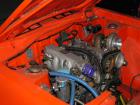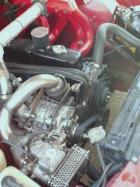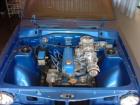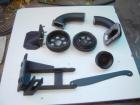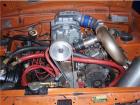| Revision as of 23:21, 21 August 2014 loosekid (Talk | contribs) (->Write-ups) <- Previous diff |
Revision as of 23:23, 21 August 2014 loosekid (Talk | contribs) (->Suppliers) Next diff -> |
||
| Line 25: | Line 25: | ||
| Gilmer drive parts, Cast Alloy Dry Sump Oil Pans With Windage Trays, oil filter adapters | Gilmer drive parts, Cast Alloy Dry Sump Oil Pans With Windage Trays, oil filter adapters | ||
| * [http://www.drysump.com/price.htm http://www.drysump.com] | * [http://www.drysump.com/price.htm http://www.drysump.com] | ||
| + | |||
| + | A Series Gilmer Drive Kit | ||
| + | * [http://www.kemotorsport.com/] | ||
| [[Category:Engine Modifications]] [[Category:Engine Mechanical]] | [[Category:Engine Modifications]] [[Category:Engine Mechanical]] | ||
Revision as of 23:23, 21 August 2014
A gilmer drive is a syncronous drive system using a cogged belt. They were developed by the R.H. Gilmer company and first available for sale in 1949. Timing belts are a type of gilmer belt.
Overview
Gilmer belts differ most importantly from V-belts in that they are synchronous. They do not slip as they turn, so are suitable from driving the camshaft. They are also stronger so can turn a supercharger. They are lighter but more expensive than V-belts. A serpentine belt is a less exepensive version but is not synchronous (will still slip slight during normal usage).
Aside from timing belts, Gilmer belts are most famously used for Supercharger belts. They are also somewhat commonly used on race engines for accessory drive (driving the water pump, etc).
Write-ups
Discussions:
- wants a D.I.Y on how to install a gilmer drive on an A series engine?
- A14 Gilmer Drive D.I.Y
- Has anyone ever put a gilmer belt drive kit on a A12?
- DIY GILMER DRIVE A-Series
Suppliers
Gilmer drive parts, Cast Alloy Dry Sump Oil Pans With Windage Trays, oil filter adapters
A Series Gilmer Drive Kit

![[Datsun 1200 encyclopedia]](/wiki/upload/wiki.png)


